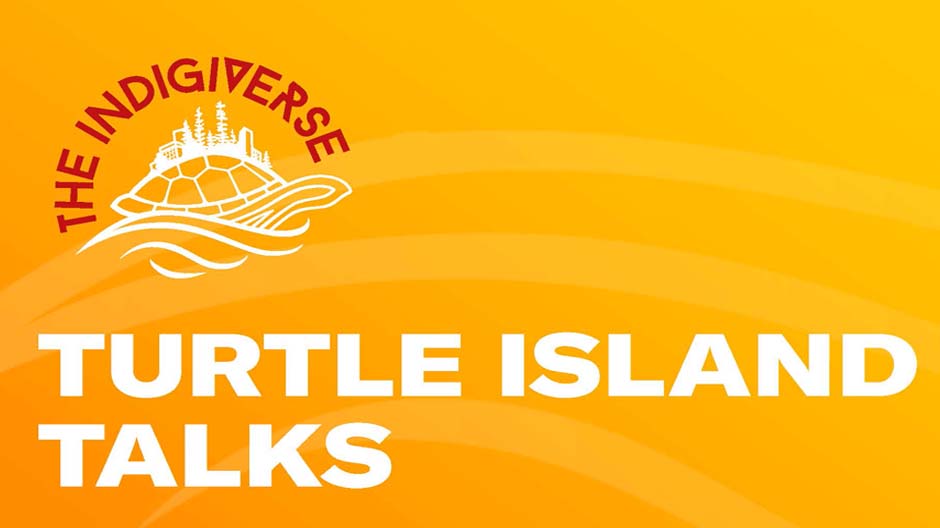
Echoes of Sovereignty: The Enduring Power of Indigenous Radio Across Turtle Island
Across the vast and varied landscapes of Turtle Island – a name many Indigenous peoples use for North America – a unique and vital form of media has long been broadcasting a different narrative, one rooted in culture, language, and self-determination. Indigenous radio programs are far more than just stations on the dial; they are indispensable arteries of communication, beating hearts of community, and powerful instruments of sovereignty in an era still grappling with the legacies of colonialism. Without preamble, these airwaves represent a profound act of reclamation, offering a counter-narrative to centuries of misrepresentation and silence.
The genesis of Indigenous radio can be traced back to a critical need for self-representation. For decades, mainstream media largely ignored, stereotyped, or actively denigrated Indigenous communities. News was filtered through a colonial lens, cultural stories were absent, and Indigenous languages were nowhere to be heard. This void created a powerful impetus for Indigenous peoples to establish their own media outlets. Starting in the 1970s, often with limited resources and immense community effort, stations began to emerge, driven by the unwavering belief that their voices deserved to be heard, unfiltered and authentic. These early efforts were acts of profound resistance, challenging the monopoly of information and asserting a right to narrative control.
One of the most immediate and profound roles of Indigenous radio is the revitalization and preservation of Indigenous languages. Centuries of assimilation policies, particularly residential schools in Canada and boarding schools in the United States, aggressively suppressed Indigenous languages, pushing many to the brink of extinction. Radio provides an unparalleled platform for daily language instruction, storytelling, and cultural immersion. From Cree in northern Manitoba to Navajo in the American Southwest, programs broadcast in ancestral tongues ensure that these languages live beyond the home, resonating through public spaces and reaching listeners of all ages. Elders, often the last fluent speakers, can share their wisdom and stories directly with the younger generations, fostering intergenerational connection and linguistic continuity. It’s not uncommon to hear a children’s program teaching basic phrases or a news segment delivered entirely in a specific Indigenous language, making the act of listening itself an act of cultural affirmation.
Beyond language, Indigenous radio stations serve as crucial hubs for news and information from an Indigenous perspective. Mainstream media often overlooks local Indigenous issues or frames them within a dominant societal narrative. Indigenous radio fills this gap, providing comprehensive coverage of tribal council meetings, land claims, treaty rights, health initiatives, environmental concerns, and the ongoing crisis of Missing and Murdered Indigenous Women, Girls, and Two-Spirit People (MMIWG2S). These stations are often the only source of local, relevant news for many remote communities. They offer a space for political discourse, allowing community members to engage directly with their leaders and hold them accountable. This localized, culturally informed reporting is essential for civic engagement and strengthens the fabric of Indigenous governance.
The spirit of self-determination is intrinsically woven into the fabric of Indigenous radio. Owning and operating a media outlet is a powerful assertion of sovereignty, demonstrating the capacity of Indigenous nations to govern their own information flow and shape their own public discourse. These stations are not merely conduits for external content; they are generators of Indigenous knowledge, perspectives, and creativity. They foster a sense of collective identity and pride, allowing communities to celebrate their achievements, mourn their losses, and collectively strategize for their future. This autonomy in media is a critical component of broader efforts towards self-governance and nation-building.

Take, for instance, KILI Radio (90.1 FM) on the Pine Ridge Indian Reservation in South Dakota, often hailed as the "Voice of the Lakota Nation." Established in 1983, KILI emerged from a deep-seated need for local communication and cultural preservation. It broadcasts extensively in Lakota, featuring traditional music, historical teachings, and contemporary news relevant to the Oglala Lakota people. During critical moments, such as the struggle for water rights or the ongoing challenges of poverty and health disparities, KILI has been an indispensable source of information and a rallying point for the community. Its existence is a testament to the power of a people to control their own narrative, ensuring that their stories are told by them, for them.
Similarly, in Canada, stations like CKRZ 100.9 FM from the Six Nations of the Grand River Territory in Ontario provide a vibrant platform for the Mohawk and Cayuga languages, local governance news, and a wide array of Indigenous music and cultural programming. These stations often become training grounds for young Indigenous journalists, broadcasters, and technicians, nurturing the next generation of storytellers and media professionals. This investment in youth is crucial, ensuring the longevity and continued relevance of Indigenous media for years to come. As one Indigenous broadcaster from Canada eloquently put it, "We are building our own institutions, not just mirroring the mainstream. We are creating spaces where our children can hear their language, their music, their stories, and know that they belong."
Despite their profound importance, Indigenous radio programs face significant challenges. Funding is often precarious, relying on grants, community donations, and limited advertising revenue. Many stations operate on shoestring budgets, with volunteer staff and aging equipment. The "digital divide" remains a major hurdle, with many remote Indigenous communities lacking reliable internet access, which limits the potential for online streaming and broader reach. Technical expertise and training for staff can also be a challenge, requiring ongoing investment in human resources. Furthermore, competing with well-funded commercial stations and the ubiquitous presence of global digital media requires constant innovation and dedication.
However, the successes far outweigh the struggles. Indigenous radio has demonstrably contributed to a resurgence of cultural pride, improved community health outcomes through targeted programming, and strengthened political advocacy. It has played a critical role in educating non-Indigenous audiences, fostering greater understanding and reconciliation. By providing a platform for Indigenous artists, musicians, and storytellers, these stations contribute to a vibrant Indigenous arts scene, often introducing new talent to a wider audience. They are a powerful antidote to loneliness and isolation in vast territories, connecting people through shared experiences and a common cultural pulse.
Looking to the future, Indigenous radio is embracing new technologies while remaining true to its foundational mission. Many stations are now streaming online, offering podcasts, and utilizing social media to expand their reach beyond traditional terrestrial signals. This digital expansion allows for greater accessibility for Indigenous diaspora communities and offers new avenues for content creation and listener engagement. Yet, the core value of local, community-focused broadcasting remains paramount. The intimate connection between a station and its listeners, the immediate relevance of its programming, and its role as a voice for the voiceless cannot be replicated by global platforms.
In conclusion, Indigenous radio programs across Turtle Island are more than just a collection of frequencies; they are living testaments to resilience, cultural continuity, and the unwavering pursuit of self-determination. They are sonic hearths where languages are rekindled, histories are recounted, and futures are envisioned. In a world increasingly homogenized by global media, these Indigenous airwaves stand as vital, unique beacons – amplifying voices that have long been marginalized, ensuring that the rich tapestry of Indigenous cultures continues to resonate loudly, clearly, and sovereignly across the land. Their enduring power lies in their capacity to not only inform and entertain but to profoundly connect, heal, and empower entire nations.



